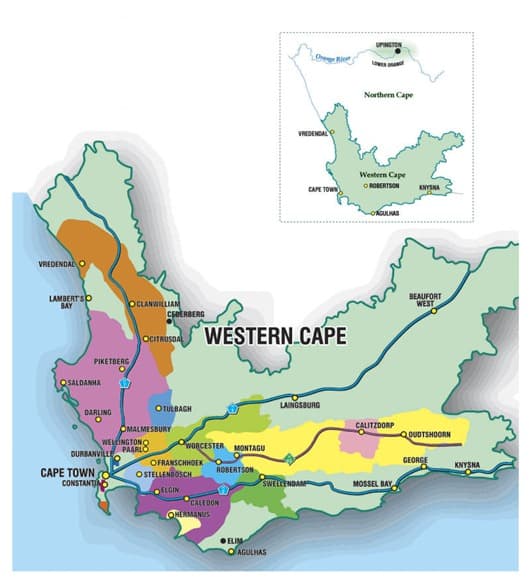I don’t know about you, but I always seem to have a tendency to forget about South Africa. Not that the wines are bad, but they certainly have their high and low points…<cough>…Pinotage…<cough>…
I’m not just going to pick on Pinotage (a crossing between Pinot Noir and Cinsault), but I think it’s fairly obvious that South Africa had the big plan that it was going to become the grape that was finally going to put them on the map. The wine map that is. This along the same lines of what Pinot Grigio is to Italy, Malbec to Argentina, Plavac Mali to Croatia…you get the idea!
Unfortunately, Pinotage hasn’t exactly turned out to be the gold mine that was hoped for, and producers have started focusing their efforts towards Syrah, Cabernet and Bordeaux grape varietals in general.
Probably because they are indeed still finding their identity, South Africa is just one of those wine producing countries that doesn’t seem to get too much attention, either in the wine press, or indeed on restaurant wine lists.
In South Africa, the higher quality wines are from regions generally closer to the Atlantic and Indian Ocean’s coastline. Towards the interior, as you can probably already imagine, it gets extremely hot and produces wines that tend to be rough and overripe.
There are more than a dozen wine producing regions in South Africa, but the following are the three better regions known for producing a generally consistent standard of wines. If you haven’t already noticed in wine, there are a lot of generalities thrown around!
 Stellenbosch
Stellenbosch
Stellenbosch is in my opinion the best (quality-wise) of all the wine regions – the South African equivalent of California’s Napa Valley if you’re into making comparisons! Supposedly, the wines from Stellenbosch have won more awards than any other region in South Africa.
It’s worth noting that South Africa currently has around 102,000 hectares (about 393 sq. miles) planted to vines,18% of which is concentrated in Stellenbosch.
In 1971, the region really started to embrace the whole idea of wine tourism, and became one of the first to establish what they call “wine routes”. Over 148 wineries are divided into 5 separate sub routes, kind of highlighting my previous comment on them being the equivalent of Napa. Also, I have officially today put completing all 5 routes on my bucket list!
Click here for a very cool map of the routes.
On a personal note, the best South African wines I’ve tasted (De Toren, pictured), hails from the Stellenbosch region. Check them out.
 Paarl
Paarl
Paarl, meaning means ‘pearl’ in Dutch, is the second largest town in the Cape, and produces around one fifth of all the wine in South Africa. The town of Paarl dates back to 1717, and supposedly takes it name from the way the light hits the Simonsberg mountains (at the base of which Paarl is located) after a rain storm, making it glisten like a pearl.
The region has a Mediterranean-style climate, making it about 2°F warmer on average than Stellenbosch.
Fortified wines (sherries and ports) used to dominate the region, but since demand has dropped off, Paarl wineries are growing a plethora of different grapes, both white and red, but it seems to be the Bordeaux varietals which are excelling.
One of the most consistent producers I have found so far in Paarl is Glen Carlou, a property owned by the Hess Family.
 Constantia
Constantia
Constantia is where where the first South African vineyards were planted. The region first started producing wine in 1689 with mainly sweet dessert style wines made from the Muscat grape. The interesting thing to note is that even though South Africa has this long, albeit slightly bumpy wine history (Apartheid will do that to a history), the country is still classified as a New World wine producing country.
Whilst the wines from Constantia aren’t as prevalent on retailers shelves as Stellenbosch and Paarl wines, certainly some of the Sauvignon Blanc’s, Chardonnay’s, Semillon’s are worth seeking out. The region of Constantia puts an emphasis on white wines, as the climate is considered cool compared to the rest of the country, due to the fact that it’s basically completely surrounded by 2 oceans.
Oh, and by the way….Napoleon was apparently particularly fond of Klein Contantia’s Vin Constance Muscat, not that he was the world’s greatest wine aficionado, but I thought it was worth mentioning!


